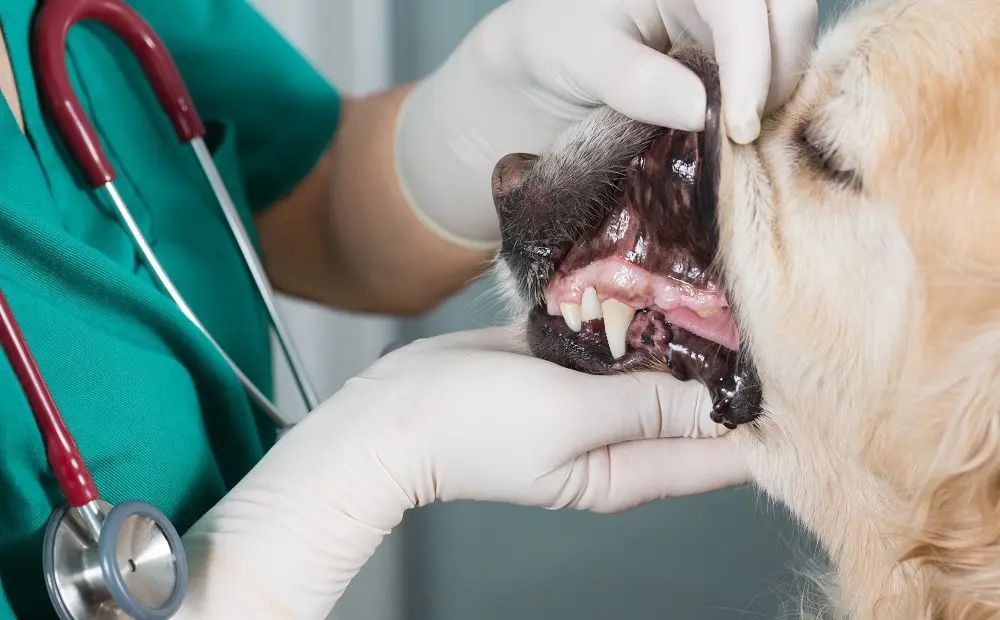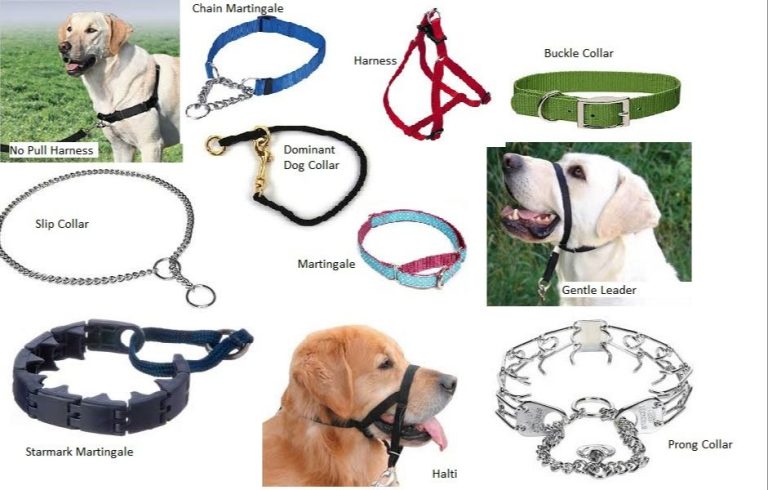A Beginner’S Guide To Understanding Dog Health Issues
Dogs can develop a variety of health issues throughout their lives. Some common health problems in dogs include infectious diseases, parasites, allergies, obesity, dental disease, arthritis, and cancer. It’s important for dog owners to have a basic understanding of common dog health issues for several reasons:
Knowing the signs of infectious diseases allows owners to seek veterinary care promptly if their dog shows any concerning symptoms. This enables faster diagnosis and treatment, improving the dog’s chances of recovery.
Being aware of potential parasites helps owners practice preventative care through flea/tick/heartworm medication. Catching parasites early is essential since they can be dangerous if left untreated.
Recognizing allergy symptoms can clue owners into potential food or environmental triggers to avoid. This minimizes the dog’s discomfort and need for medication.
Noticing obesity early gives owners the chance to adjust diet and exercise before excess weight strains the dog’s body, increasing the risks of other health issues.
Identifying dental disease can prompt a veterinary dental cleaning to relieve discomfort and reduce bacteria before they lead to systemic infection.
Spotting arthritis symptoms allows owners to discuss pain management options with their vet to improve joint health and mobility.
Detecting cancer warning signs expedites diagnosis and treatment, boosting survival odds.
In summary, understanding common dog health issues equips owners to optimize their dog’s wellbeing through prevention, prompt veterinary care, and proactive management. Keeping up-to-date on a dog’s evolving health needs is an essential part of providing responsible pet care.
Common Infectious Diseases
Some of the most common infectious diseases in dogs include:

Parvovirus
Parvovirus is a highly contagious and potentially fatal viral disease. The virus attacks the gastrointestinal tract, causing vomiting, diarrhea, and dehydration [1]. Parvovirus is spread through contact with infected feces and can live in the environment for months. Puppies and unvaccinated dogs are most at risk. Treatment focuses on managing symptoms and preventing dehydration. Vaccination helps prevent infection.
Kennel Cough
Kennel cough is a respiratory infection caused by bacteria or virus. It causes a forceful, hacking cough and is easily spread where dogs congregate. Most cases are mild, although secondary infections can develop. Antibiotics are sometimes prescribed for bacterial infections. Vaccines and avoiding crowded areas can help prevent kennel cough [2].
Leptospirosis
Leptospirosis is a bacterial disease spread through infected urine. Symptoms include fever, vomiting, diarrhea, and jaundice. It can lead to kidney or liver failure if untreated. Antibiotics are used for treatment. Vaccination provides protection against some strains of Leptospirosis.
Ringworm
Ringworm is a fungal skin infection that causes circular lesions and hair loss. It spreads through direct contact with an infected dog or by contact with contaminated objects. Oral medications or topical ointments are used to treat ringworm infections [1].
Common Parasites
Parasites are a common concern for dog owners. Some of the most prevalent parasites that affect dog health include fleas, ticks, heartworms, and intestinal worms.
Fleas are tiny insects that live on the skin and feed on a dog’s blood. They can cause skin irritation, allergies, and anemia in severe infestations. According to one study, fleas were found in 31% of dogs in the United States. Ticks are arachnids that embed their heads into a dog’s skin to feed on blood. They can transmit serious diseases like Lyme disease and Rocky Mountain spotted fever. Maintaining tick prevention is essential for dogs that go outdoors.
Heartworms are parasitic roundworms transmitted by mosquitos. The larvae migrate to the heart and pulmonary arteries, causing damage and potential heart failure. According to the American Heartworm Society, incidence is rising in the U.S., with over 1 million dogs estimated to be infected. Preventatives like monthly chewables help protect dogs from this dangerous parasite.
Intestinal worms include roundworms, tapeworms, whipworms and hookworms that live in a dog’s digestive system. They are common in puppies and can cause diarrhea, vomiting, weight loss and anemia. One study found that 31.9% of dogs had Ancylostoma hookworms. Regular deworming helps protect both canine and human health.
Allergies
Allergies are a common health issue in dogs. According to research, 10-20% of dogs suffer from allergic reactions (Chan, 2018). Allergies can be triggered by food, fleas, pollen, dust mites, mold, and other substances. Food allergies are less common and account for about 10% of canine allergic reactions (Richellusa, 2019). Specific proteins, grains, and food additives are potential food allergens. However, most dog allergies are caused by environmental factors like pollen, dust mites, and mold. A 2018 study found that only 0.2% of dogs had food allergies while flea and environmental allergies were much more prevalent (AVMA, 2018).
Common symptoms of dog allergies include itchy skin, recurrent ear infections, hair loss, excessive licking of the paws or skin, scooting, and skin infections. Diagnosis involves testing for environmental and food allergies. This may include blood tests, elimination diet trials, and skin prick tests. Treatment focuses on avoiding allergens, medications, and immunotherapy.
Obesity
Obesity is one of the most common health issues in dogs today. According to the Association for Pet Obesity Prevention (APOP), nearly 60% of dogs in the United States are considered overweight or obese. Dogs that are overweight have an excessive amount of body fat and are above their ideal weight range. Obesity in dogs can lead to serious health risks if left untreated.
Carrying excess weight puts more stress on a dog’s vital organs like the heart and lungs. It increases the risk for conditions such as osteoarthritis, diabetes, high blood pressure, heart disease, and certain types of cancer. Obese dogs also generally have decreased stamina and mobility. Establishing a dog’s ideal weight range and body condition score allows owners to monitor weight fluctuations and address obesity issues early.
The key to preventing and treating obesity is proper diet and exercise. Feeding measured portions of quality dog food formulated for the dog’s size, age, and activity level will help maintain a healthy weight. Daily walks, play time, or structured exercise helps burn calories and build muscle. Portion control along with regular exercise enables overweight dogs to gradually reach and sustain their ideal body weight.
According to the Purina Institute, “Worldwide, studies estimate that up to 63% of pet cats and 59.3% of pet dogs are overweight or obese.” https://www.purinainstitute.com/centresquare/therapeutic-nutrition/obesity-in-dogs-and-cats
Dental Disease
Dental disease is one of the most common medical conditions in dogs, with over 80% of dogs over 3 years old having some form of it [1, 2, 3]. There are two main types of dental disease in dogs: periodontal disease and tooth fractures.
Periodontal disease involves inflammation and infection of the tissues surrounding the teeth, including the gums, periodontal ligament, and alveolar bone. It’s caused by plaque and tartar buildup on the teeth which allows bacteria to proliferate and spread infection to surrounding tissues. If left untreated, periodontal disease can lead to tooth loss and potentially systemic health issues. Regular dental cleanings, brushing, dental diets, and other plaque control measures can help prevent and manage periodontal disease [3, 1].
Tooth fractures are breaks or cracks in the tooth structure. They can occur from trauma, chewing on hard objects, or advanced periodontal disease weakening the tooth. Signs include visible cracks, pain when chewing, or bleeding from the mouth. Mild fractures can be smoothed or restored, but severely damaged teeth may require extraction.
Signs of dental problems in dogs include: bad breath, discolored or loose teeth, reduced chewing/appetite, pawing at the face, and bleeding from the mouth. Owners should routinely inspect their dog’s teeth and have a veterinarian examine their dog’s mouth at least once a year [2, 1]. Catching dental issues early makes treatment easier and can prevent progression of disease.
Arthritis
Arthritis is a common condition in dogs that causes pain and inflammation in the joints. It occurs when the cartilage that cushions the bones wears down over time. There are several types of arthritis that affect dogs:
- Osteoarthritis – This is the most common form and results from normal wear and tear on the joints. It usually develops in older dogs but can also occur from an injury. Large breeds like Labrador Retrievers are more prone to osteoarthritis according to one study (https://www.ncbi.nlm.nih.gov/pmc/articles/PMC5884849/).
- Rheumatoid arthritis – This is an autoimmune disease where the immune system attacks the joints. It causes painful inflammation and can occur at any age.
Some common signs of arthritis in dogs include:
- Reluctance to walk, jump up, or climb stairs
- Stiffness after rest or reluctance to move after rest
- Limping or favoring a limb
- Difficulty standing up
There are several treatment options for arthritis in dogs:
- Nonsteroidal anti-inflammatory drugs (NSAIDs) to control pain and inflammation
- Joint supplements like chondroitin and glucosamine to support cartilage health
- Weight management to reduce stress on joints
- Low-impact exercise to maintain joint mobility
- Physical therapy and massage
Seeing a veterinarian is recommended if your dog shows signs of arthritis, as getting an early diagnosis and starting treatment can help slow the progression of the disease.
Cancer
Cancer is unfortunately very common in dogs. Some of the most common cancers seen in dogs include lymphoma, mast cell tumors, melanoma, osteosarcoma, and hemangiosarcoma.
Treatment options depend on the type of cancer, but commonly include surgery, radiation therapy, and chemotherapy. When caught early, some cancers like mast cell tumors have a good prognosis if fully removed with clean margins. More aggressive cancers like hemangiosarcoma have a poorer prognosis regardless of treatment.
For any cancer, the goal is to maximize quality of life. This involves balancing treatment options with side effects. Palliative care may be the best choice to keep a dog comfortable in some cases. Euthanasia may be considered if a dog’s quality of life declines to an unacceptable level. Your veterinarian can help determine the best course of treatment and manage pain to keep your dog happy for as long as possible.
Behavioral Issues
Behavioral issues are very common in dogs, with studies estimating that over 80% of dogs exhibit some type of problematic behavior [1]. The most prevalent behavioral issues seen in dogs are separation anxiety, aggression, and compulsive disorders [2].
Separation anxiety affects around 14-20% of dogs [3]. It occurs when a dog experiences high levels of stress when left alone or separated from their owner. Symptoms include destructive behavior, vocalization, and inappropriate urination and defecation. Separation anxiety can be treated through desensitization training, providing mental stimulation, and medication in severe cases.
Aggression is another very common behavioral problem, reported in around 20% of dogs [1]. Aggression can be caused by fear, possession/territorial aggression, pain-induced aggression, predatory aggression, frustration, maternal aggression, and dominance aggression. Treatment depends on identifying the underlying cause and can include behavior modification training, anti-anxiety medication, and altering the dog’s environment/routine.
Compulsive disorders like tail chasing, fly biting, and flank sucking affect around 5% of dogs [1]. These repetitive behaviors are similar to OCD in humans. They are thought to be stress-related. Treatment typically involves behavior modification and anti-anxiety medications.
[1] https://www.frontiersin.org/articles/10.3389/fvets.2021.734973
[2] https://www.sciencedirect.com/science/article/abs/pii/S1558787818302727
[3] https://www.ncbi.nlm.nih.gov/pmc/articles/PMC6715928/
When to See a Vet
It’s important to know the warning signs that indicate your dog needs to see a vet. Changes in behavior, appetite, thirst, bathroom habits or physical appearance could signify an underlying health issue. According to the AVMA, skin allergies and ear infections are among the top reasons dogs visit the vet.
Some emergency situations that require immediate vet attention include difficulty breathing, seizures, uncontrolled bleeding, ingestion of toxic substances, and symptoms of heat stroke. Bring your dog to an emergency vet clinic right away if you observe any of these signs.
Even if your dog seems healthy, annual wellness exams and preventative care are crucial. Vets can detect problems early before they become serious. Wellness visits typically include a physical exam, vaccines, heartworm test and intestinal parasite screening. Your vet may recommend additional screening tests based on your dog’s age and breed.
Establishing a relationship with a trusted vet and scheduling regular visits can help keep your dog happy and healthy. Know the warning signs to watch for, and don’t hesitate to call your vet if you have any concerns about changes in your dog’s health.






